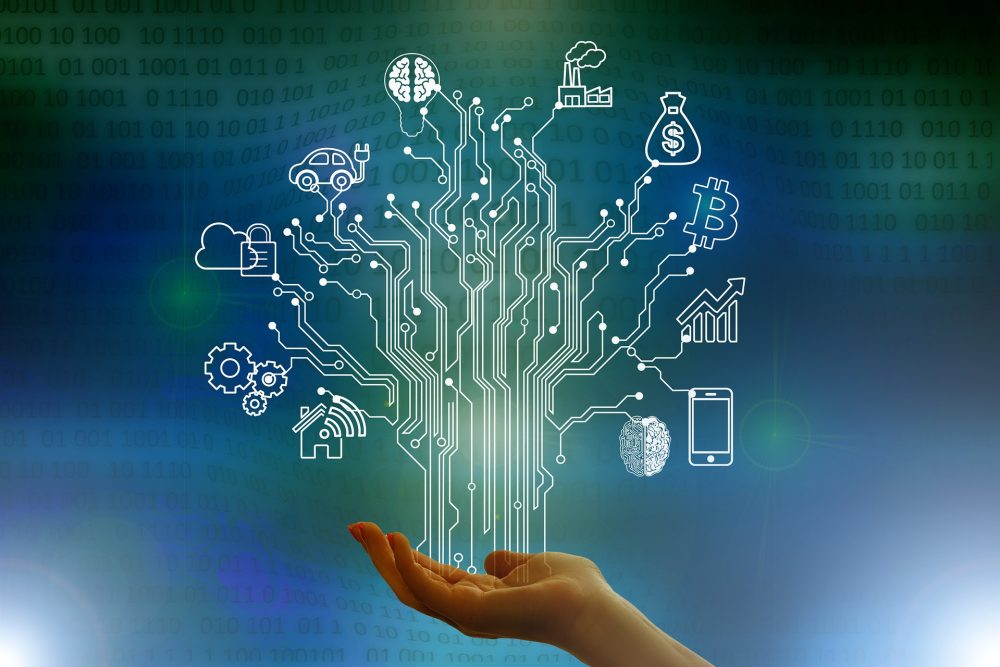It’s hard to imagine any company, in any industry, managing without digital tools in 2024. Computers facilitate communication between employees, servers take over the processing of customer data and suppliers receive orders via QR codes and smart scanners. However, digitalisation also harbours risks for customers, business owners and the environment. Corporate digital responsibility, or CDR for short, is therefore, becoming increasingly important.
What happens to data records when they are no longer needed? Does my company’s Cloud provider use sustainable energy? Are people with disabilities included in my AI-supported calculator for clothing sizes? Answering questions like these and addressing possible shortcomings might sound like a lot of work, but it’s part of a growing movement for responsible digitalisation in businesses that’s gaining momentum.
What exactly does CDR mean?
The term “CDR”, derived from similar terms such as Corporate Social Responsibility and CR (Corporate Responsibility), was coined by Dr Saskia Dörr. An expert in digital responsibility, she defines CDR (in German) as a “voluntary commitment to sustainable management by companies that takes into account the social and economic changes brought about by digitalisation”. In other words, companies voluntarily commit to consider the social and environmental impact of digital tools to use them responsibly. This initiative goes beyond simply the legal requirements.
Looking for “Carbon Dioxide Removal”?
In the context of sustainability, “CDR” is also an abbreviation for “Carbon Dioxide Removal”. This refers to technologies that make it possible to extract carbon from the atmosphere, the soil or the sea.
If you want to find out more about the possibilities of carbon capture, Captura Corp offers an exciting approach here on RESET.
It involves, for example, companies checking the energy consumption and emissions of their digital infrastructure. By switching to sustainable alternatives, they optimise the sustainability of their IT systems. The mobile communications provider Telefónica Germany, for example, provides mobile communications data to optimise public transport to enable better optimisation of transport to meet users’ needs.
European rail provider Deutsche Bahn, on the other hand, introduced a comparison calculator a few years ago, which can be used to compare CO2 emissions, energy consumption and pollutant emissions of different modes of transport. The processing of user data is totally anonymised.
The associated voluntary commitment of introducing CDR measures does, of course, mean additional work and therefore costs for companies. After all, it requires companies to review existing digital tools in terms of their sustainability, and then adapt them or look for alternatives. As we know with many of our conclusions on digital tools in the realm of sustainability, cost and time are often major roadblocks in their implementation.
What are the advantages of CDR for companies?
There is some good news. The topics of sustainability, data protection, transparency and equality have become more important to many people in recent years. As this has an impact on their personal decisions in everyday life, the demand for companies that align their corporate values with these values is also increasing. In short, the demand for sustainable, fair and socially responsible companies is higher than ever before, and will continue to grow in the future.
Companies that pursue a sustainable digital strategy gain a competitive advantage. The disclosure of such a strategy in the form of a CDR report also ensures greater trust among customers and business partners. According to experts, responsible use of digital tools also has a positive effect on employee motivation.
The 9 principles of the CDR Code
The CDR Initiative formulates 9 principles of its CDR Code:
- Basic social values
- People-centredness
- Creating benefits
- Avoiding harm
- Autonomy
- Fairness
- Transparency
- Responsibility
- Sustainability
More information can be found on the initiative’s homepage.
Developing a strategy for dealing responsibly with digital issues now also prepares companies for future requirements and political changes. This is because CR issues are also becoming more and more of a political focus.
Assistance through initiatives and certificates
The concept of voluntary commitments is not entirely uncontroversial. After all, without legal obligations or monitoring bodies, there is no guarantee that individuals, companies or even countries will honour their promises. This means that, even with a CDR strategy, there is no further definition of how companies should act in their voluntary commitments. The German Federal Ministry for the Environment, for example, has launched an initiative to provide companies with assistance. There are also other ministries and organisations that collect information on CDR. However, the CDR initiative sometimes works directly with interested companies.
In recent years, the initiative has compiled a CDR code of nine principles that summarise the objectives of the various fields of action. These are intended to provide companies, consumers and decision-makers from business, politics and civil society with “guidance for CDR-compliant behaviour”. The principles include aspects such as a human-centred approach, transparency about the functioning and impact of technical systems and resource-conserving and socially just development in line with the United Nations’ SDGs.
The CDR initiative structures these various measures into five fields of action: “Handling data”, “Education”, “Climate and resource protection”, “Employee involvement” and “Inclusion”. This makes it a little easier for companies to check existing digital processes or new tools for CDR compatibility with the help of these fields of action. At the same time, they can weigh up whether adjustments or alternatives might be advisable.
The initiative has been collecting CDR measures from various companies in detailed reports since July 2022. These are available for interested parties to download free of charge from the “learning and exchange platform for committed companies” and are published once a year. In July 2023, eight companies published reports on their CDR measures here. The reports are a good opportunity to review their own measures and identify any shortcomings. At the same time, they offer customers and business partners greater transparency.
Corporate responsibility is becoming increasingly important
Political goals such as climate neutrality by 2045 can hardly be achieved without changes in the economy. Strategies for reducing CO2 emissions always affect the economy. Our features on digital strategies to combat climate change contain a number of solutions that have been developed and implemented by companies. However, digital self-responsibility at company level not only has positive effects for the planet. It has a positive effect on the acquisition of new partners and customers. It also increases motivation in companies and prepares them for the future.
Thanks to information offerings such as the CDR initiative, the barrier to entry has fallen in recent years. It is striking that the measures presented have many overlaps with CSR and CR. Providers specialising in Green IT often pursue social issues in addition to sustainable goals. When cooling data centres, for example, they also ensure that residents in the areas used do not experience any restrictions in the availability of drinking water. Or, they ensure that social grievances and risks for the extraction of materials are taken into account and prevented accordingly in the production of electronic components.
Instead of treating CDR and CSR separately, a comprehensive corporate responsibility should urgently be established that summarises topics from different areas. In addition to simply providing information, political measures should also include reforms, requirements and opportunities in the form of subsidies. A positive example of this is the new Supply Chain Act, which came into force on the 1st of January 2023. As an EU-wide measure, it is intended to lead to better working conditions along supply chains in the long term. And to achieve this, companies must consistently track their supply chains and check them for certain requirements.
Companies that have done the groundwork for sustainable digitalisation are already meeting these requirements. Sensibly implemented CDR measures are therefore also a way for companies to prepare for such changes.
Digital data cleaning as the starting signal for CDR
The CDR initiative shows how responsible measures can be made more attractive in companies with its “Digital Data Cleaning” campaign. The aim of the campaign is to “inspire employees in companies and other organisations to clean up their data on hard drives, network drives, in email inboxes and in the cloud” and to support them in doing so. After all, the thoughtless storage of data has a major impact on people’s individual digital carbon footprint.
According to the CDR initiative, 10 GB of online storage in the cloud already consumes 1 kg of CO2 equivalents per year. Regular data cleaning is therefore a sensible first CDR measure that every company can implement. And after the first step, it will be easier to include a voluntary commitment to CDR as a new corporate goal. Further information on digital data cleaning can be found on the campaign’s homepage. If you want to find out more about reducing your digital footprint, you can find a guide right here at RESET.










